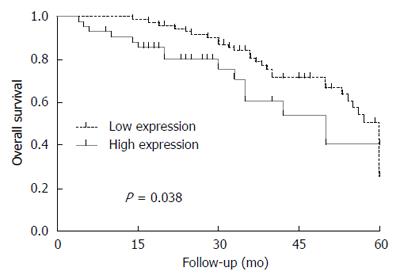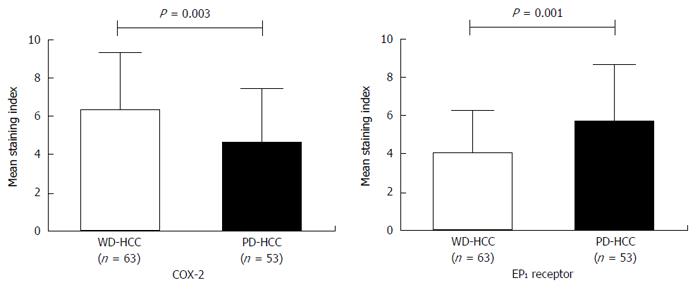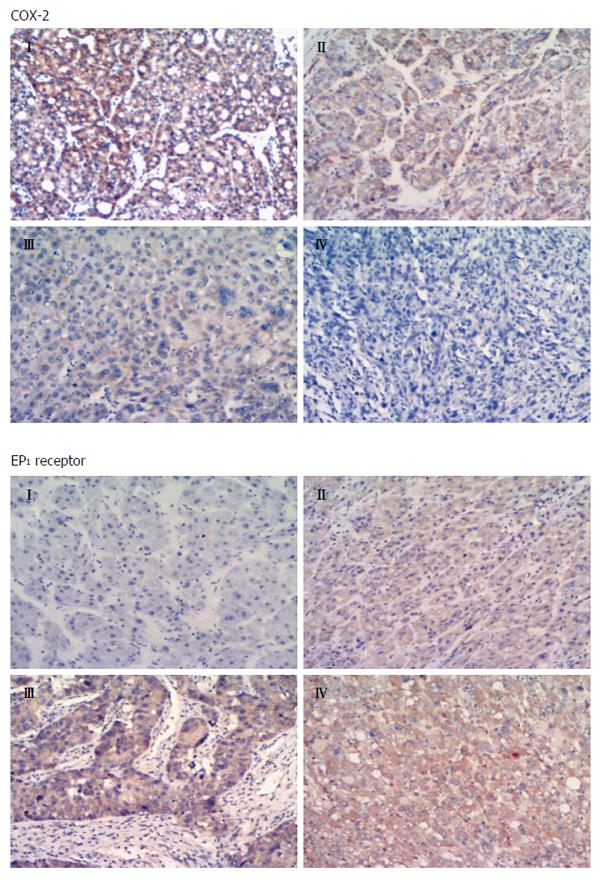Copyright
©The Author(s) 2016.
World J Gastroenterol. Oct 21, 2016; 22(39): 8798-8805
Published online Oct 21, 2016. doi: 10.3748/wjg.v22.i39.8798
Published online Oct 21, 2016. doi: 10.3748/wjg.v22.i39.8798
Figure 1 Overall survival of hepatocellular carcinoma patients stratified by low or high expression of EP1 receptor.
Figure 2 Cyclooxygenase-2 and prostaglandin E1 receptor immunoreactivity scores in hepatocellular carcinoma tissues at different histological grades.
Cyclooxygenase-2 (COX-2) expression was higher in well-differentiated tissue (Edmondson grade I-II), while EP1 receptor expression was higher in poorly-differentiated tissue (Edmondson grade III-IV). WD: Well-differentiated; PD: Poorly differentiated; HCC: Hepatocellular carcinoma.
Figure 3 Representative micrographs showing different intensities of immunohistochemical stain against cyclooxygenase-2 and prostaglandin E1 receptor in tissues with different histological grades (Edmondson grade I-IV).
Magnification, × 100. Cyclooxygenase-2 (COX-2) expression level decreased with lower grade of differentiation, while EP1 receptor expression increased with lower grade of differentiation.
- Citation: Yang HJ, Jiang JH, Yang YT, Yang XD, Guo Z, Qi YP, Zeng FH, Zhang KL, Chen NZ, Xiang BD, Li LQ. Cyclooxygenase-2 expression is associated with initiation of hepatocellular carcinoma, while prostaglandin receptor-1 expression predicts survival. World J Gastroenterol 2016; 22(39): 8798-8805
- URL: https://www.wjgnet.com/1007-9327/full/v22/i39/8798.htm
- DOI: https://dx.doi.org/10.3748/wjg.v22.i39.8798











